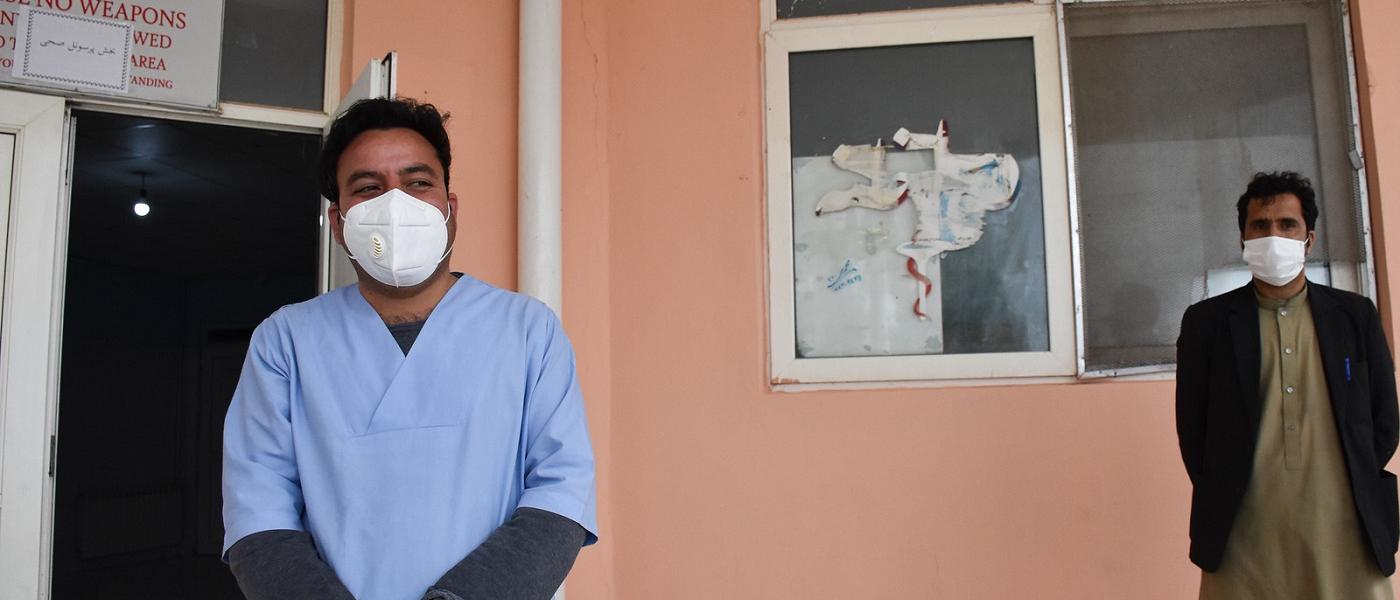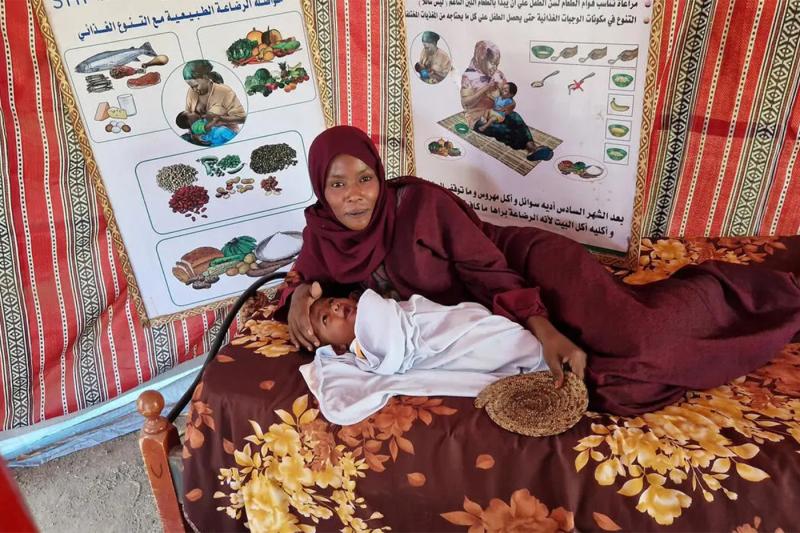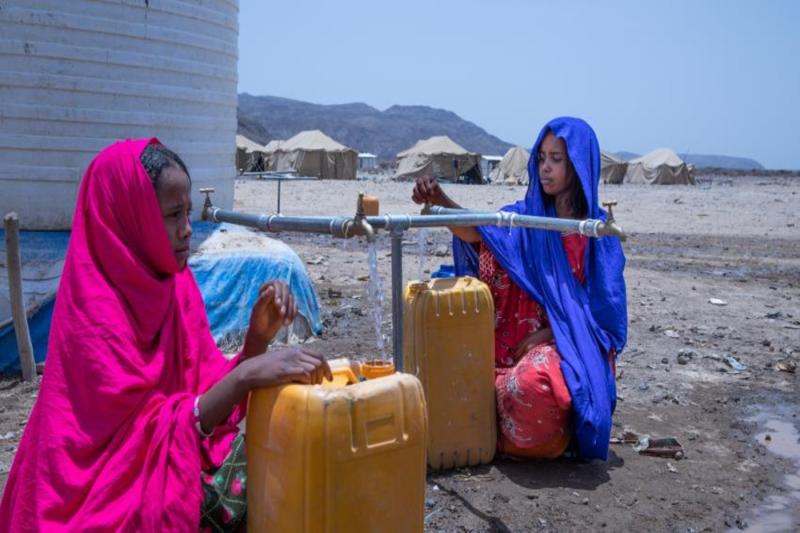
Stemming the spread of COVID-19 in Afghanistan with help from the pooled funds
Dr. Nasir Farhan has only been a doctor for a year. But he is now facing the biggest challenge of his life as one of 40 medical staff (16 doctors, 24 nurses) responding to the COVID-19 outbreak in Hirat city in the west of Afghanistan.
“I have been here since the beginning of the outbreak,” he said while putting on his personal protective equipment, which consists of a full-body gown, plastic sleeves to cover his shoes, gloves, medical mask and goggles. This is part of his daily routine as he prepares to see patients in the former paediatric hospital that has since been converted to a COVID-19 isolation ward.

Dr. Nasir puts on his protective gear. Credits: OCHA/Linda Tom
On any given day, nine doctors are required to provide 24-hour care to some 80 patients who are in urgent need of medical care. Health workers such as Dr. Nasir, who are providing direct care to patients, are particularly at risk of getting the virus and often underprotected and overworked. According to the World Health Organization (WHO), 30 health-care workers contracted COVID-19 in Afghanistan and one doctor died from the virus on 6 April. “We fear we don’t have enough protective equipment and ventilators,” said Dr. Nasir. A new health facility with 150 beds has just been built to accommodate additional COVID-19 patients.
“We are receiving 20 new patients per day and we are not just seeing old people, we are now seeing a lot of young people who are sick,” Dr. Nasir said. Many of the patients who are just 27 and 28 years old – now in isolation – struggle to sit up as the doctor does his rounds. In a separate area, a mother and her three daughters are waiting for their test results.
To date, eight people have died from the virus, while 17 others have recovered, but many experts fear that many cases have likely gone unreported. “It doesn’t matter where people are coming from because sooner or later the virus will be everywhere, not just in Hirat. It doesn’t matter where it came from, we’re all in this together,” added Dr. Nasir.

40 medical staff are currently responding to the COVID-19 outbreak in Hirat city in the west of Afghanistan. Credit: OCHA/Linda Tom
Decades of conflict and poverty have eroded the country’s health system. The 2019 Whole of Afghanistan Assessment found that almost half of shock-affected households could not access a health centre in the previous three months. More than 82,000 people in displacement sites in Hirat are living in sub-standard and overcrowded conditions, with limited access to basic services, particularly water, sanitation and hygiene.
The health response in Afghanistan is supported by WHO polio surveillance staff and 34,000 polio surveillance volunteers within health facilities, the private sector and communities. To date, 6,000 people have been trained and all 34,000 volunteers will be trained and begin country-wide surveillance and case detection in all districts in the coming weeks.
OCHA's pooled funds CERF and CBPFs are supporting efforts in Afghanistan to help contain the virus. In March, an allocation of $1.5 million from the Afghanistan Humanitarian Fund (AHF) helped to scale up capacities to detect and treat people infected by COVID-19. Additional funding of $1.6 million from CERF is helping UN and partners to mitigate the impact of the pandemic.
These allocations are part of a series of funding from CERF and CBPF to help contain the virus at global level. Together, the pooled funds have provided a combined US$88.1 million to COVID-19 pandemic responses across 26 countries. For a full overview of CERF and CBPF support to COVID-19 please click here.

Overview of CERF and CBPF funding to respond to Covid-19 pandemic. Credits: OCHA/Dita Anggraeni


